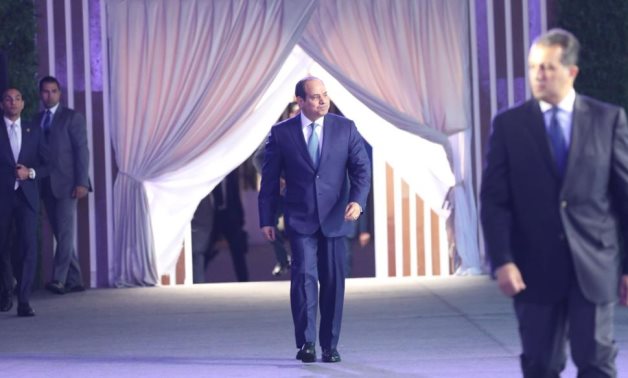
President Abdel Fatah al-Sisi at the inauguration ceremony of New Mansoura on December 1, 2022. Press Photo
CAIRO – 1 December 2022: President Abdel Fatah al-Sisi inaugurated Thursday New Mansoura City situated in the middle of three governorates that are Daqahliyah, Damietta, and Kafr El Sheikh.
New Mansoura is a smart fourth-generation city that consists of a corniche stretching on 15 kilometers of the Mediterranean coast, central parks, and entertainment venues.
Minister of Housing, Utilities and Urban Communities Assem El Gazar pointed out that the city has beaches for all levels of income and that 25 percent of its surface area is landscape.
New Mansoura is also home to New Mansoura University, new headquarters of Daqahliyah Security Directorate, a complex offering civil services, and a digital control center to manage utilities in the city.
President Sisi noted that the decree sanctioning the construction of New Mansoura City was issued in 2010, and that now, finally the plan became a reality. That is the outcome of investing LE3.5 billion in the city's infrastructure alone.
President Sisi noted that the government is implementing a plan to build 30 new cities, stressing that they are not a luxury. Rather, they are a necessity to cope with increasing urbanization generated by a staggering population growth, and to combat building houses in agricultural lands.
Minister Gazar clarified that the first phase of New Mansoura encompasses 11,232 luxury flats whose surface areas range between 120 and 150 square meters, 203 villas, and 1,392 social housing units.
The first phase of the city, which has been completed, spans over 2,063 feddans (one feddans equals 4,500 square meters) and it has cost LE45 billion. As for the entire surface area set for the city, it is 7,200 feddans.
New Mansoura also comprises a desalination plant whose value exceeds LE1 billion. In that context, President Sisi underlined that the government is implementing a plan to build desalination plants in all coastal cities bordering the Mediterranean and the Red Sea. That is because Egypt’s share of Nile water, which is 55.5 billion cubic meters, does not fulfill the needs mandated by population growth.
Comments
Leave a Comment